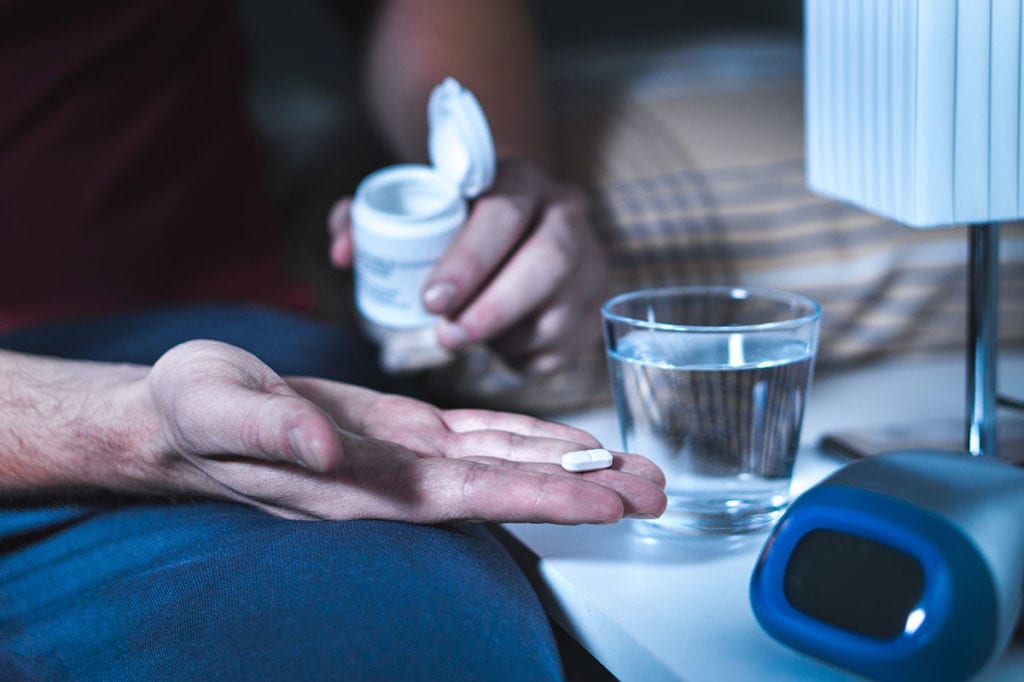Most people have experienced a time in life when situations or events may have triggered periods of melancholy or an overall sense of feeling down. It’s normal, at one time or another, to feel depression following something sad or distressing that has happened. Usually, these feelings will naturally fade away over a few days or weeks. But when feelings of sadness are accompanied by a loss of interest in activities that were once enjoyable, and last for two or more months, major depression is likely the culprit. Typically, treatment for depression includes therapy, medication or a combination of the two. Learn about your medication options through a guide to depression medication.
What Are Antidepressants?
Antidepressants are medications typically used to treat depression, but can also be used to treat anxiety, insomnia and some forms of pain. Studies have shown that when a person suffers from depression, circuits in the brain and central nervous system do not function properly. The circuits do not effectively transfer the main neurotransmitters (chemicals), norepinephrine, serotonin and dopamine within the brain. Antidepressants work by helping to repair the brain’s circuitry and neurotransmitter function.
How a person responds to antidepressant use varies. Statistics indicate that only about 30% of people who use medication to treat their depression see results during their first round of treatment. Additionally, there are various types of antidepressants and some will work better on certain people than on others. It is important to talk with your doctor to determine which type of antidepressant might work best for you. The most common side effects of antidepressants include nausea or vomiting, weight loss or gain, diarrhea or constipation or sexual dysfunction. It is important to call your doctor if your symptoms include new or worsening depression, anxiety, insomnia, irritability, thoughts of dying, suicide or a suicide attempt.
A Guide to Depression Medication
There are five primary categories of antidepressant.
Tricyclic Antidepressants (TCAs)
TCAs are considered “first-generation antidepressants” and are some of the first medications developed for the treatment of depression. TCAs work by increasing the levels of serotonin and norepinephrine while blocking another neurotransmitter, acetylcholine, to restore balance in the brain and relieve depression. Examples of TCAs are amitriptyline (Elavil), imipramine (Tofranil), doxepin (Sinequan), and nortriptyline (Aventyl).
Monoamine Oxidase Inhibitors (MAOIs)
MAIOs are also considered first-generation antidepressants and among the first antidepressants developed to treat depression. MAOIs work by increasing the levels of dopamine, serotonin and norepinephrine in the brain to ease depression. However, MOAIs are no longer readily prescribed due to serious interactions with certain foods and other medications. Examples of MAOIs are isocarboxazid (Marplan) and phenelzine (Nardil).
Selective Serotonin Reuptake Inhibitors (SSRIs)
SSRIs are considered “second-generation antidepressants” and came onto the market in the 1980s. SSRIs work by blocking the reabsorption (reuptake) of serotonin in the brain, which makes more serotonin available, causing depression to be relieved. Examples of SSRIs include fluoxetine (Prozac), citalopram (Celexa), sertraline (Zoloft), and paroxetine (Paxil).
Serotonin and Norepinephrine Reuptake Inhibitors (SNRIs)
SNRIs are also considered “second-generation antidepressants.” SNRIs work by blocking the reabsorption of serotonin and norepinephrine in the brain to lessen depression. Some examples of SNRIs include duloxetine (Cymbalta) and desvenlafaxine (Pristiq). 5.
Others
There are three other antidepressants that differ from TCAs, MAOIs, SSRIs, and SNRIs by using different brain receptors to interact with neurotransmitters. Bupropion (Wellbutrin) works by interacting with dopamine and norepinephrine to alleviate depression. Mirtazapine (Remeron) interacts with serotonin and norepinephrine to relieve depression. Trazodone (Desyrel) works by increasing serotonin in the brain. Using trazodone for depression can be helpful when insomnia is also an issue. It alleviates symptoms of depression and aids in sleep, but does not cause undesirable side effects that affect the central nervous system.
The side effects of bupropion and mirtazapine are milder than other antidepressants and less likely to produce sexual dysfunction. However, trazodone is metabolized in the liver and thus is more prone to negatively interact with foods and other medications. Care should be used when taking trazodone for depression as it can cause excessive drowsiness, affecting daytime use. It is also related closely enough to SSRIs to warrant the same black box warning concerning suicide.
Get Treatment Today
At Promises Behavioral Health, we want to do more than offer a guide to depression medication. We also want to help you with mental health treatment. We offer a variety of mental health treatment options, including:
- Depression treatment
- Anxiety treatment
- Mood disorder treatment
- Personality disorder treatment
- Substance abuse disorder treatment
To learn more about our guide to depression medication, call 844.875.5609 today.

